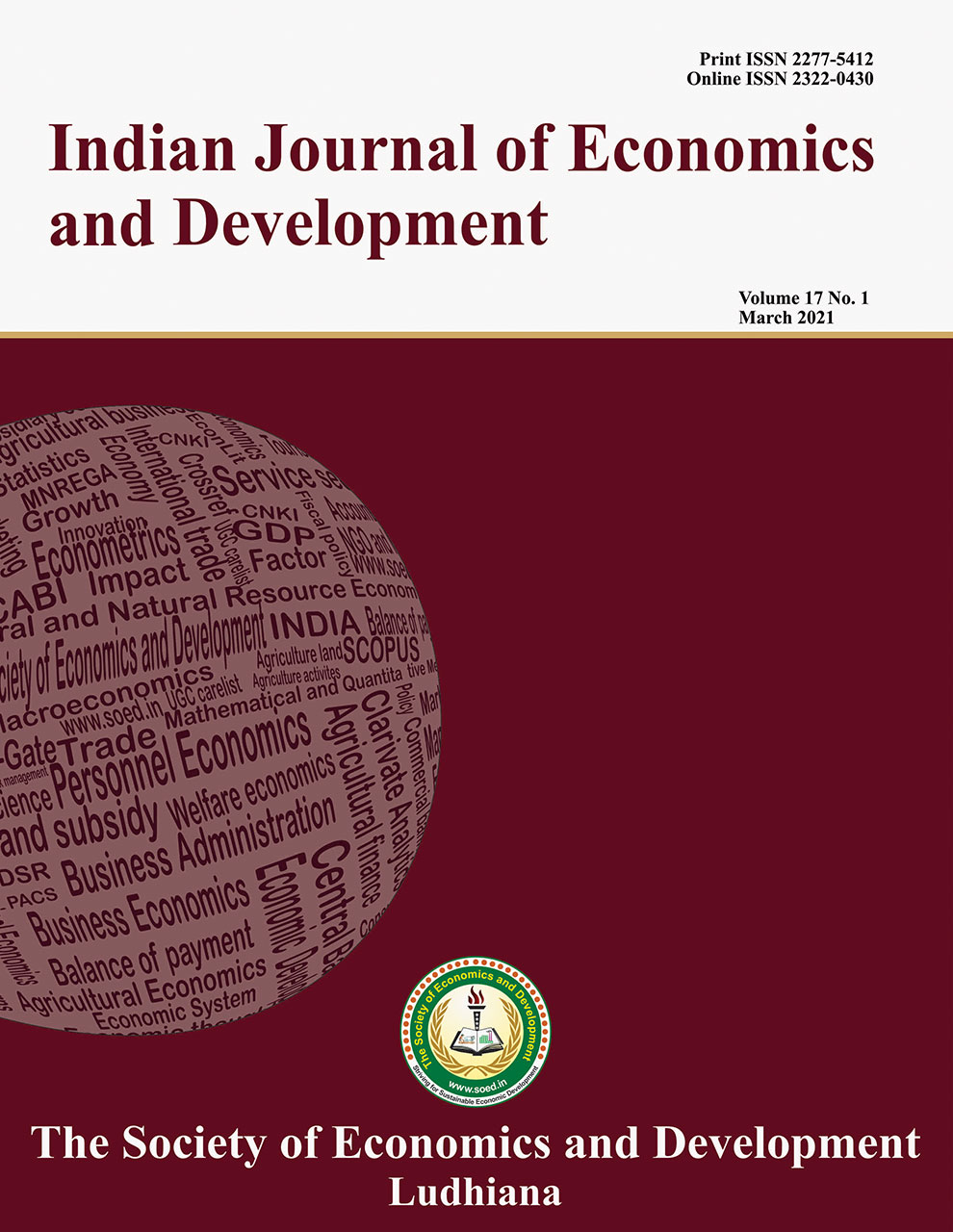Growth Determinants of India in Post-economic Reform Period

Price: ₹ 500
Author: Shekhar , Dimpal Vij and Parul Verma
Author Address: Senior Research Fellow, and Research Scholar, Department of Economics, Babasaheb Bhimrao Ambedkar University, Lucknow-226025 (Uttar Pradesh), Associate Professor, Department of Economics, MMH College, Ghaziabad-201001 2 (Uttar Pradesh) and Assistant Profe
Keywords: Economic reforms, globalization, growth determinants, post-1990 era, trade
JEL Codes: C01, F10, F14, F43, F60
Abstract
The economic reforms of the 90s had furnished
two props liberalization and globalization, which later changed the growth
strategies of the Indian economy. Contextually, the present study made an
effort to comprehend the growth rate prevailed in the gross domestic product,
gross fixed capital formation, exports and imports via compound growth rate
from 1990 to 2017. Further, the study also investigated how well the growth
determinants were cointegrated in the post-1990 era. Therefore, a restricted
vector autoregressive model was applied. The compound growth rate results
articulated that the Indian economy enjoyed a high growth in exports and imports
in the post-liberalized era. The findings of the VAR model state that gross
fixed capital formation and Export's had a positive and significant impact on
India's gross domestic product in the long run. On the contrary, imports had a
negative and significant impact, implying that an increase in imports will lead
to a decline in India's gross domestic product, which is a well-observed fact
in the economic domain. The study observed one-way causality from Gross
Domestic Product and Exports. Additionally, a bidirectional causal relationship
was observed among export and gross fixed capital formation. The policy
perception that the study suggested that government should utilize gross fixed
capital formation in those sectors which have preferably more social outreach and
potential to strengthen the exports and at the same time also minimize country
dependence on imports.
Description
Indian Journal of Economics and Development
Volume 17 No. 4, 2021, 879-886
DOI: https://doi.org/10.35716/IJED/20298
NAAS Score: 5.15
Indexed in Clarivate Analytics (ESCI) of WoS
Indexed in Scopus
UGC Approved



